-
 bitcoin
bitcoin $122090.672462 USD
1.59% -
 ethereum
ethereum $4493.758974 USD
0.56% -
 xrp
xrp $3.033145 USD
0.65% -
 tether
tether $1.000629 USD
0.00% -
 bnb
bnb $1169.854250 USD
7.07% -
 solana
solana $230.954786 USD
-0.19% -
 usd-coin
usd-coin $0.999785 USD
0.00% -
 dogecoin
dogecoin $0.256108 USD
-1.12% -
 tron
tron $0.342333 USD
-0.12% -
 cardano
cardano $0.859632 USD
-0.10% -
 hyperliquid
hyperliquid $48.932146 USD
-2.25% -
 chainlink
chainlink $22.345466 USD
-1.29% -
 ethena-usde
ethena-usde $1.000217 USD
-0.03% -
 avalanche
avalanche $31.203456 USD
1.93% -
 sui
sui $3.579145 USD
1.05%
How to import a wallet to Coinbase Wallet
Coinbase Wallet allows users to import existing wallets using private keys or recovery phrases, giving them full control over their crypto assets securely.
Jul 21, 2025 at 03:57 am
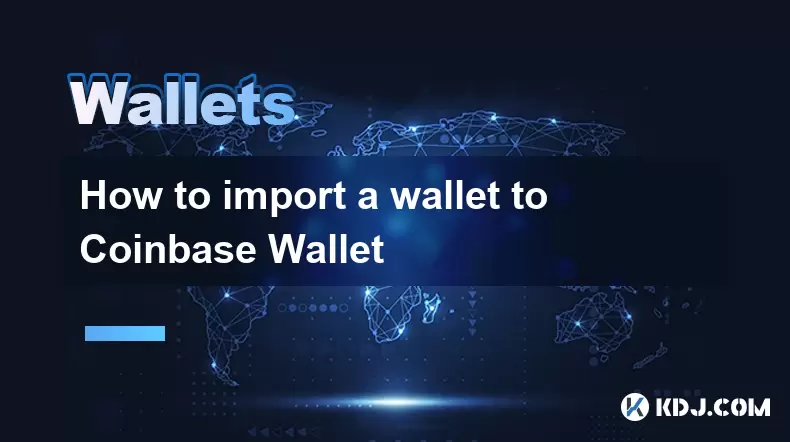
What is Coinbase Wallet?
Coinbase Wallet is a self-custodial wallet that allows users to store, send, and receive cryptocurrencies securely. Unlike the traditional Coinbase exchange, which is custodial, Coinbase Wallet gives users full control over their private keys. This means that users are responsible for the security of their funds, which is a critical aspect of cryptocurrency management. Importing an existing wallet into Coinbase Wallet is a common practice for users who want to manage their assets outside of an exchange or another wallet service.
Why Would You Want to Import a Wallet?
There are several reasons why a user might want to import a wallet into Coinbase Wallet. One common scenario is when a user is transitioning from another wallet service and prefers the interface or features of Coinbase Wallet. Another reason could be to consolidate multiple wallets into a single wallet for easier management. Importing a wallet allows users to retain access to their existing funds and transaction history without the need to transfer assets between wallets, which can incur transaction fees.
Understanding Wallet Types and Private Keys
Before importing a wallet, it's essential to understand the types of wallets that can be imported. Coinbase Wallet supports importing wallets that use private keys or recovery phrases (also known as seed phrases). These are typically associated with other self-custodial wallets like MetaMask, Trust Wallet, or hardware wallets like Ledger or Trezor. If you have a wallet that uses a private key or recovery phrase, you can import it into Coinbase Wallet without issues. However, if your wallet is custodial (like Binance or Kraken), you cannot directly import it since you don't have access to the private keys.
How to Import a Wallet Using a Private Key
To import a wallet using a private key, follow these steps:
- Open the Coinbase Wallet app on your mobile device.
- Tap on the 'Settings' icon located in the bottom right corner.
- Select 'Wallets' from the menu.
- Tap on 'Import wallet'.
- Choose the option to import using a private key.
- Enter your private key carefully—ensure there are no typos.
- Tap 'Import' to complete the process.
It is crucial to keep your private key secure and never share it with anyone. Once imported, the wallet will appear in your list of wallets within the app, and you will have full access to your funds.
How to Import a Wallet Using a Recovery Phrase
If you're using a recovery phrase to import your wallet, the process is similar but involves a different input method. Here's how to do it:
- Open the Coinbase Wallet app.
- Navigate to Settings > Wallets > Import wallet.
- Select the option to import using a recovery phrase.
- Enter your 12 or 24-word recovery phrase in the correct order.
- Confirm the phrase by re-entering it if prompted.
- Tap 'Import' to complete the process.
The recovery phrase is the master key to your wallet, so it's essential to store it securely, preferably offline. Once imported, your wallet will be accessible within the Coinbase Wallet app, and you can manage your funds as usual.
Security Considerations When Importing a Wallet
Security is a top priority when dealing with cryptocurrency wallets. When importing a wallet, there are several precautions you should take:
- Never enter your private key or recovery phrase on untrusted websites or apps.
- Ensure you are using the official Coinbase Wallet app downloaded from the App Store or Google Play Store.
- Double-check the spelling of your private key or recovery phrase to avoid errors.
- Consider using a secure environment when importing your wallet—avoid public Wi-Fi or shared devices.
Coinbase Wallet does not store your private keys or recovery phrases on its servers, so it's up to you to ensure their security. Taking these precautions can help prevent unauthorized access to your funds.
Troubleshooting Common Import Issues
Sometimes, users may encounter issues when importing a wallet. Common problems include incorrect private keys or recovery phrases, unsupported wallet types, or app errors. If you receive an error message when importing:
- Double-check the private key or recovery phrase for typos or incorrect formatting.
- Ensure your wallet uses a supported blockchain (e.g., Ethereum, Bitcoin).
- Restart the app and try again.
- If the issue persists, contact Coinbase Wallet support for assistance.
It's important to note that Coinbase Wallet cannot recover lost private keys or recovery phrases, so users must keep them secure at all times.
Frequently Asked Questions
Can I import multiple wallets into Coinbase Wallet?Yes, Coinbase Wallet allows users to import multiple wallets. Each wallet will appear as a separate entry in the app, and you can switch between them easily.
Is it safe to import a wallet into Coinbase Wallet?Yes, it is safe as long as you follow proper security practices. Ensure you're using the official Coinbase Wallet app and never share your private key or recovery phrase with anyone.
What happens to my original wallet after importing it into Coinbase Wallet?Your original wallet remains unaffected. Importing a wallet into Coinbase Wallet simply gives you access to the same funds through a new interface. The private key or recovery phrase remains the same across both wallets.
Can I import a wallet from a hardware wallet like Ledger or Trezor?Yes, you can import a wallet from a hardware wallet by using the recovery phrase associated with it. However, importing the wallet into Coinbase Wallet means you will no longer need the hardware device to access those funds.
Disclaimer:info@kdj.com
The information provided is not trading advice. kdj.com does not assume any responsibility for any investments made based on the information provided in this article. Cryptocurrencies are highly volatile and it is highly recommended that you invest with caution after thorough research!
If you believe that the content used on this website infringes your copyright, please contact us immediately (info@kdj.com) and we will delete it promptly.
- BlockDAG, DOGE, HYPE Sponsorship: Crypto Trends Shaping 2025
- 2025-10-01 00:25:13
- Deutsche Börse and Circle: A StableCoin Adoption Powerhouse in Europe
- 2025-10-01 00:25:13
- BlockDAG's Presale Buzz: Is It the Crypto to Watch in October 2025?
- 2025-10-01 00:30:13
- Bitcoin, Crypto, and IQ: When Genius Meets Digital Gold?
- 2025-10-01 00:30:13
- Stablecoins, American Innovation, and Wallet Tokens: The Next Frontier
- 2025-10-01 00:35:12
- NBU, Coins, and Crypto in Ukraine: A New Yorker's Take
- 2025-10-01 00:45:14
Related knowledge
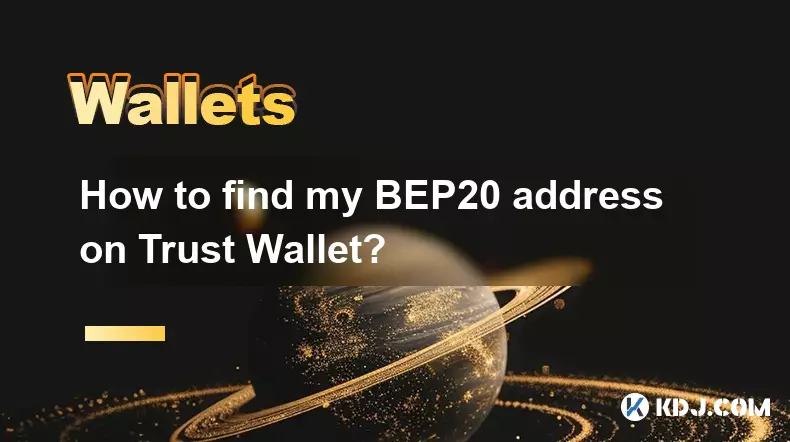
How to find my BEP20 address on Trust Wallet?
Oct 04,2025 at 06:19pm
Understanding BEP20 and Trust Wallet Compatibility1. Trust Wallet is a widely used cryptocurrency wallet that supports multiple blockchain networks, i...
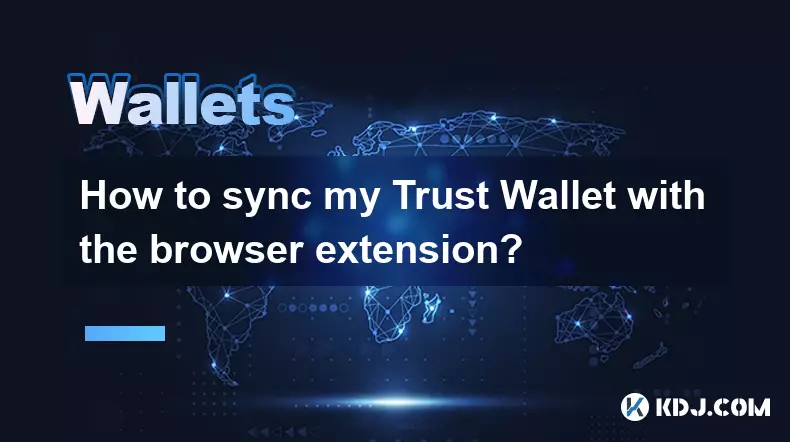
How to sync my Trust Wallet with the browser extension?
Oct 03,2025 at 06:19pm
Understanding Trust Wallet and Browser Extension IntegrationTrust Wallet is a popular non-custodial cryptocurrency wallet that supports a wide range o...
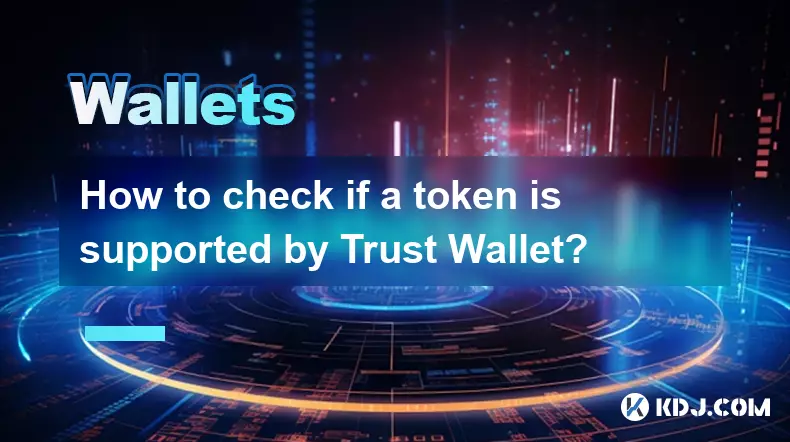
How to check if a token is supported by Trust Wallet?
Oct 04,2025 at 05:18am
Understanding Token Compatibility with Trust Wallet1. Trust Wallet supports a wide range of blockchain networks, including Ethereum, Binance Smart Cha...

How to get the Trust Wallet browser extension?
Oct 01,2025 at 12:37am
How to Access the Trust Wallet Browser Extension1. Visit the official Trust Wallet website through a secure internet connection. Navigate to the downl...

How to interact with a DApp using Trust Wallet?
Oct 02,2025 at 10:00pm
Connecting Trust Wallet to a DApp1. Open the Trust Wallet app on your mobile device and ensure your wallet is unlocked with access to your assets. Nav...
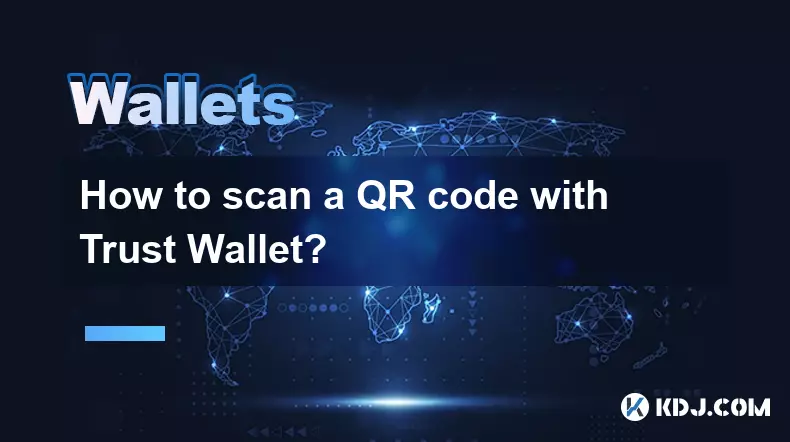
How to scan a QR code with Trust Wallet?
Oct 02,2025 at 03:37pm
Understanding QR Codes in Trust Wallet1. QR codes are widely used in cryptocurrency applications to simplify transaction processes. Trust Wallet lever...

How to find my BEP20 address on Trust Wallet?
Oct 04,2025 at 06:19pm
Understanding BEP20 and Trust Wallet Compatibility1. Trust Wallet is a widely used cryptocurrency wallet that supports multiple blockchain networks, i...

How to sync my Trust Wallet with the browser extension?
Oct 03,2025 at 06:19pm
Understanding Trust Wallet and Browser Extension IntegrationTrust Wallet is a popular non-custodial cryptocurrency wallet that supports a wide range o...

How to check if a token is supported by Trust Wallet?
Oct 04,2025 at 05:18am
Understanding Token Compatibility with Trust Wallet1. Trust Wallet supports a wide range of blockchain networks, including Ethereum, Binance Smart Cha...

How to get the Trust Wallet browser extension?
Oct 01,2025 at 12:37am
How to Access the Trust Wallet Browser Extension1. Visit the official Trust Wallet website through a secure internet connection. Navigate to the downl...

How to interact with a DApp using Trust Wallet?
Oct 02,2025 at 10:00pm
Connecting Trust Wallet to a DApp1. Open the Trust Wallet app on your mobile device and ensure your wallet is unlocked with access to your assets. Nav...

How to scan a QR code with Trust Wallet?
Oct 02,2025 at 03:37pm
Understanding QR Codes in Trust Wallet1. QR codes are widely used in cryptocurrency applications to simplify transaction processes. Trust Wallet lever...
See all articles










































































